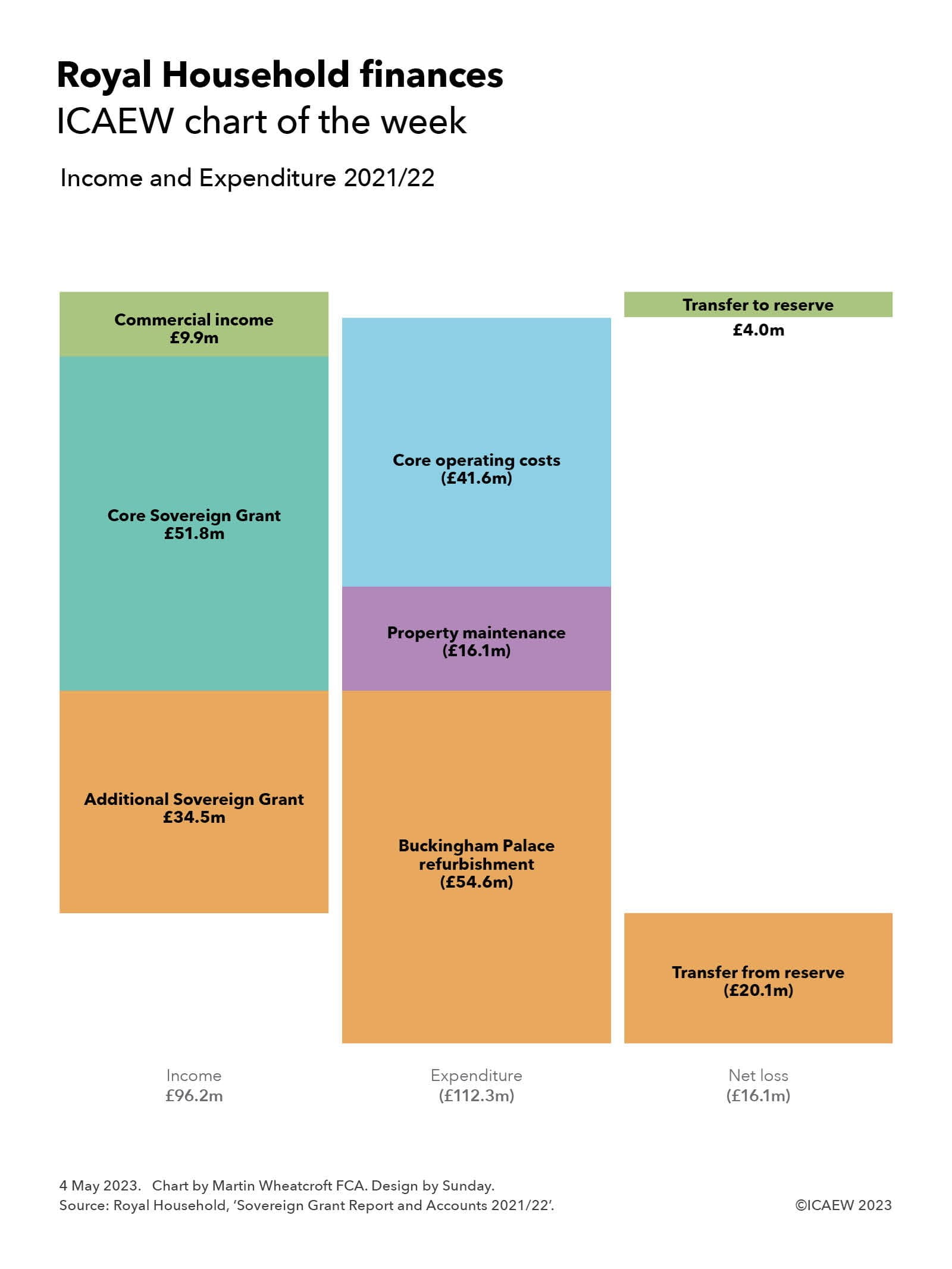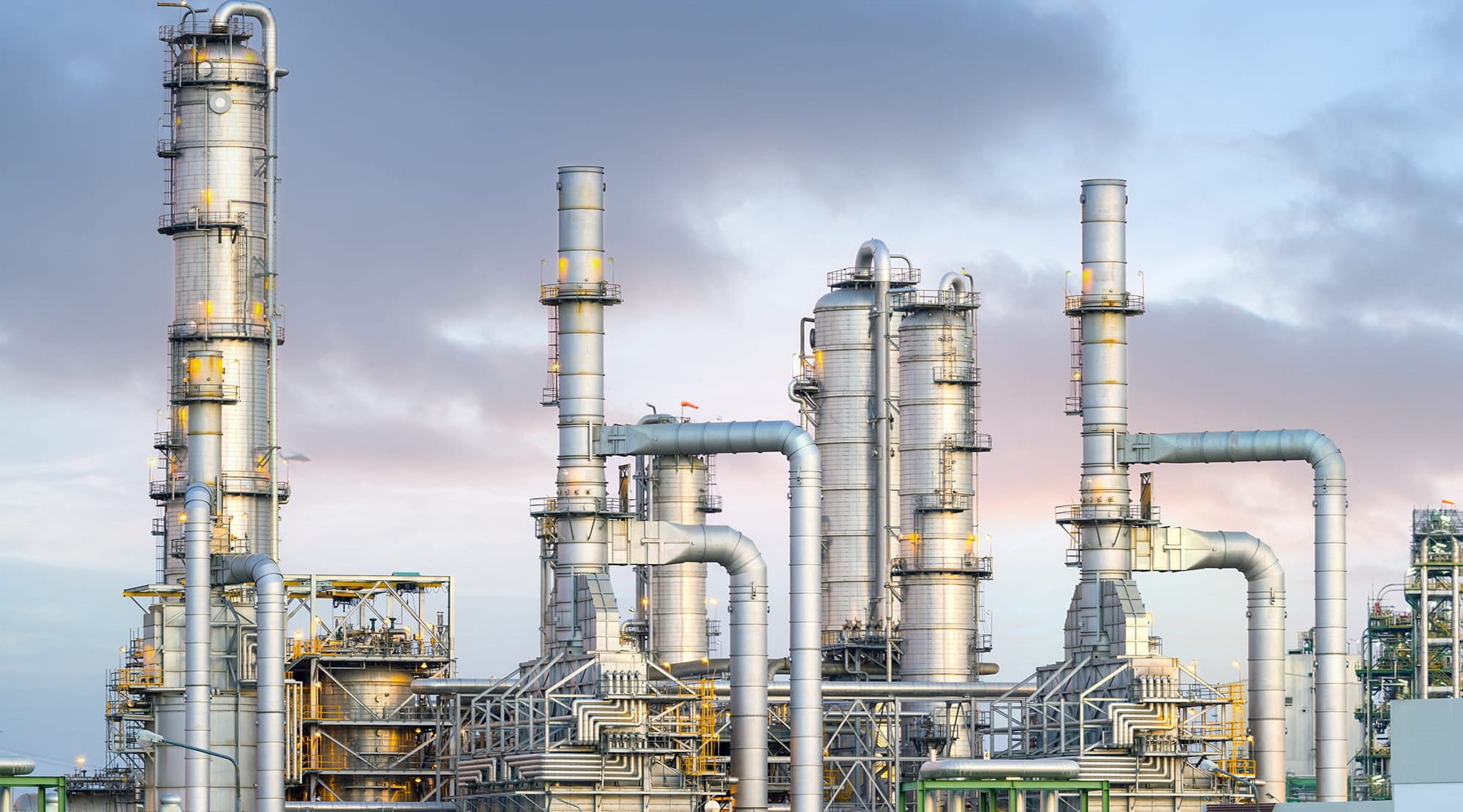
Our chart this week is on the finances of the Royal Household, based on its most recent financial statements for the financial year ended 31 March 2022 (2021/22), a period in which Her Majesty Queen Elizabeth II was in charge.
Income during the year was £96.2m, comprising a core Sovereign Grant of £51.8m and an additional Sovereign Grant of £34.5m (a total of £86.3m), together with commercial income of £9.9m. Expenditure amounted to £112.3m, comprising core operating costs of £41.6m, core property maintenance of £16.1m, and Buckingham Palace refurbishment costs of £54.6m.
The net loss was £16.1m, consisting of £20.1m transferred from reserves to cover amounts spent in the year refurbishing Buckingham Palace in excess of the additional Sovereign Grant for that year, less £4m transferred to reserves from the surplus by which the core Sovereign Grant and commercial income exceeded core operating costs and property maintenance.
The Sovereign Grant is funded out of the profits of the Crown Estate, a portfolio of property and other investments that were originally handed over to the state in 1760 by King George III in exchange for ending his responsibility to contribute towards the costs of running the civil government. This arrangement included a contribution from the Civil List to the Royal Household towards the costs of his official duties as head of state, separate from personal expenditure funded from his private resources as Duke of Lancaster (and as Duke of Cornwall, given there was no Prince of Wales at that point).
The Civil List continued through the reigns of George IV and William IV and was made permanent in 1837 when Queen Victoria took the throne, at least until 2012 when it was replaced by the Sovereign Grant. This consolidated into one budget the previously separate departmental grant-in-aid payments for royal travel, communications, and maintenance of official royal palaces in addition to the Civil List payments to cover official duties, although it excludes the costs of police and military security, armed forces ceremonial duties, and royal events such as the Coronation.
The Crown Estate’s contribution was initially set at 15% of its net income, with a cap on the level of reserves that the Royal Household can build up, as well as a floor that prevents the grant from falling if profits go down. This is being supplemented on a temporary basis by an additional 10% from 2017-18 onwards to fund a 10-year £369m refurbishment of Buckingham Palace.
The Royal Household generates commercial income from property rentals and from The Royal Collection Trust (a charity, which in turn generates income from visitors to Buckingham Palace and Windsor Castle), as well as from recharges to the King and other members of the Royal Family for their personal usage of the royal palaces, including their accommodation. Contributions from The Royal Collection Trust were waived during the pandemic, including most of 2021/22.
Expenditure during 2021/22 of £112.3m comprised £54.6m on the refurbishment of Buckingham Palace, £41.6m in core operating costs and £16.1m on property maintenance.
Core operating costs of £41.6m consisted of £23.4m in staff costs, £4.5m in official travel, £3.2m for utilities, £2.9m for digital services, £1.3m for housekeeping and hospitality, £2m in depreciation, and £4.3m in other spending.
Property maintenance expenditure relates to Buckingham Palace, St James’s Palace, Clarence House, Marlborough House Mews, Hampton Court Mews, Windsor Castle, Windsor Home Park, and parts of Kensington Palace, but does not include the Palace of Holyroodhouse (which is maintained by Historic Environment Scotland).
Not shown in the chart is the balance sheet, with net assets of £63.6m comprising property improvements, plant and machinery and other fixed assets of £29.1m, cash of £45.1m and other current assets of £4.1m, less £16m in payables, plus £1.3m in net defined benefit pension scheme asset. Reserves comprise £15.7m in relation to the core Sovereign Grant, £15.1m to the Buckingham Palace refurbishment, £2.4m in retained surpluses, and £30.4m in other reserves. The balance sheet does not include the royal palaces and other royal properties themselves, which are held in trust for the nation by the King.
Lower net income from the Crown Estate over the course of the pandemic mean that the core and additional Sovereign Grants have been frozen at the same level in both 2022/23 and 2023/24, although they are expected to increase in 2024/25.
As the accounts illustrate, most of the cost of the monarchy goes towards the cost of maintaining and refurbishing the royal palaces, which are held in trust for the nation. It may be surprising to discover that the King pays to use the royal apartments, and so if the UK ever were to become a republic, it is likely that the net cost of a future ‘Presidential Household’ would likely be higher without those contributions. Unless we decided to give some of the palaces – and their associated maintenance costs – back to the Royal Family.
Either way, the amounts involved represent a tiny proportion of UK public spending, which exceeded £1trn in 2021/22 or £15,400 per person (£1,280 per month).
On a per capita basis, the Royal Household received £1.27 per person in core and additional Sovereign Grant in 2021/22 and generated 15p in commercial income, a total of £1.42 in the year (or 12p a month). It spent £1.65 per person (14p per month), comprising core operating costs of 61p, property maintenance of 24p, and Buckingham Palace refurbishment expenditures of 80p.
To find out more, read the Sovereign Grant Report.


